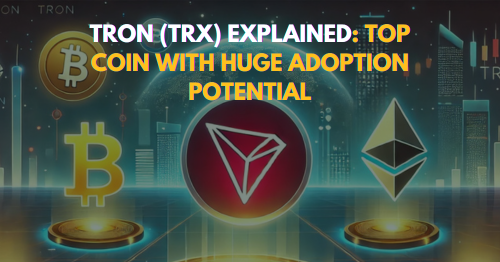
Crypto Trading Guide That Works for Every Trader
Crypto trading has rapidly evolved into a mainstream financial activity, attracting investors across the globe. Whether you’re new to the digital asset space or looking to sharpen your trading game, understanding how crypto trading works is critical for success in this fast-paced environment.
What Is Crypto Trading?
Crypto trading refers to the process of buying and selling cryptocurrencies such as Bitcoin, Ethereum, and various altcoins via digital exchanges. Unlike traditional financial markets that have fixed trading hours, cryptocurrency markets operate 24/7, allowing for greater flexibility and global participation.
Traders can engage in several types of transactions including spot trading, futures contracts, margin trading, and peer-to-peer (P2P) platforms. Each trading type has its own set of advantages, risks, and required expertise.
Why Crypto Trading Is Gaining Momentum
1. Unmatched Volatility
Cryptocurrency prices can rise or fall dramatically within short timeframes, offering seasoned traders profitable opportunities in both bullish and bearish markets.
2. Around-the-Clock Availability
Unlike stock markets, crypto exchanges never close, which empowers users to trade anytime, regardless of time zone.
3. Decentralization
Cryptocurrencies operate on blockchain technology, eliminating the need for intermediaries and providing greater control to traders.
4. Diverse Digital Assets
The ecosystem includes not just Bitcoin and Ethereum but also thousands of Altcoins, enabling traders to diversify their holdings.
Essential Crypto Trading Strategies
Long-Term Holding (HODLing)
This approach involves purchasing crypto assets and holding them for months or years, ignoring short-term volatility in favor of long-term gains.
Intraday Trading
Traders capitalize on short-lived price movements, executing multiple trades within a single day to profit from fluctuations.
Swing Trading
This medium-term strategy focuses on capturing market “swings” over a period of days or weeks based on trend analysis.
Micro-Trading or Scalping
Scalpers make frequent, small trades to accumulate modest profits throughout the day, requiring sharp timing and high focus.
Must-Have Tools for Effective Crypto Trading

1. Trading Platforms
Use trustworthy platforms like Binance, Kraken, or Indian exchanges such as CoinDCX and WazirX. Consider liquidity, fees, and security features.
2. Technical Charting Tools
Platforms like TradingView help analyze market trends, support/resistance levels, and technical indicators.
3. Digital Wallets
Utilize hot Wallets for regular trades and cold wallets (hardware wallets) for securely storing long-term crypto holdings.
4. Automated Trading Bots
Trading bots execute trades based on pre-programmed strategies, eliminating emotional bias and improving efficiency.
5. Risk Control Tools
Use tools like stop-loss, trailing stop, and limit orders to manage capital and minimize exposure.
6. News Feeds and Alerts
Stay ahead of the curve with timely updates on regulations, market sentiment, and macroeconomic factors affecting crypto.
Key Risks in Crypto Trading
Extreme Price Swings
Sudden market movements can trigger heavy losses if proper risk management isn’t in place.
Regulatory Uncertainty
Cryptocurrency regulations vary across jurisdictions and are constantly evolving, especially in developing countries.
Cybersecurity Threats
Phishing attacks, hacks, and rug pulls can lead to financial loss. Always use secure platforms and enable two-factor authentication.
Emotional Trading Habits
Emotional decisions often lead to poor trades. Maintaining discipline is vital for long-term success in crypto trading.
How to Begin Your Crypto Trading Journey

Step 1: Educate Yourself
Learn the basics of blockchain, decentralized finance, tokenomics, and common trading terms before investing real money.
Step 2: Select a Reliable Exchange
Choose a licensed and reputed trading platform that aligns with your goals and trading style.
Step 3: Complete the KYC Process
Submit identification documents and secure your account with strong passwords and 2FA.
Step 4: Deposit Funds
Use UPI, bank transfer, or P2P methods to fund your wallet in INR or stablecoins like USDT.
Step 5: Start Trading Small
Begin with low-risk trades to gain confidence and understand platform mechanics.
For The Beginners, Our Suggested Exchange Platform is Binance most trusted and reliable. Do research on your own before creating the account.
Smart Practices for Safe Crypto Trading
- Diversify assets to spread out risk
- Stay informed on Indian and global regulations
- Use hardware wallets for better protection
- Establish stop-loss orders to limit downside risk
- Avoid investing capital you can’t afford to lose
The State of Crypto Trading in India
The Indian crypto market continues to thrive despite uncertain regulations. Platforms such as ZebPay, Bitbns, and CoinSwitch have enabled millions of Indians to trade digital assets legally and efficiently.
Furthermore, educational initiatives and blockchain events in India have empowered more users to understand and adopt crypto trading. As Web3 innovations emerge, Indian traders are expected to contribute significantly to the global decentralized finance landscape.
Avoid These Common Crypto Trading Errors
- No Risk Plan
Skipping proper risk analysis can result in avoidable losses. - Excessive Trading
High-frequency trading without strategy often leads to unnecessary fees and losses. - Copying Without Research
Blindly following others can be dangerous. Perform due diligence before any trade. - Poor Security Hygiene
Use strong passwords and never share your seed phrase with anyone.
Conclusion
Crypto trading offers an exciting opportunity to build wealth in the digital economy. However, success hinges on proper education, strategic planning, and emotional discipline. By using the right tools and approaches, and staying informed about regulatory changes, especially in India, traders can navigate the risks and make the most of the opportunities available in this transformative market.
I work as a content writer in the blockchain and cryptocurrency domain. I have a keen interest in exploring the world of digital assets, Web3, and emerging crypto technologies. My goal is to provide readers with easy-to-understand, engaging, and trustworthy insights, helping them stay informed and confident in the rapidly evolving world of crypto and blockchain.




